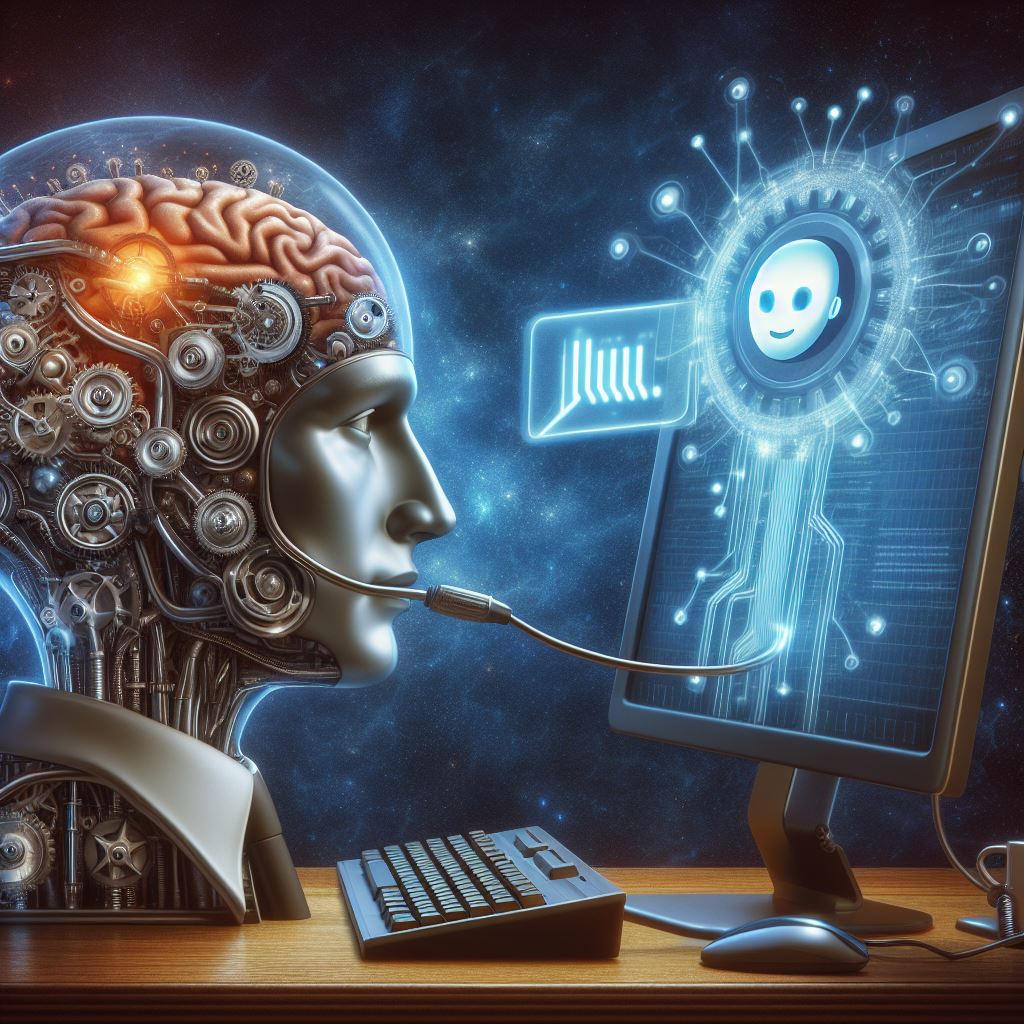Let’s discuss Generative AI vs Predictive AI vs Machine Learning.
Generative AI vs Predictive AI vs Machine Learning

Generative AI vs Predictive AI vs Machine Learning
Generative AI vs Predictive AI vs Machine Learning, Let’s begin.
In the ever-evolving landscape of artificial intelligence (AI), understanding the nuances between different AI paradigms is crucial. Generative AI, Predictive AI, and Machine Learning (ML) are three distinct approaches, each with its own purpose and applications. Let’s embark on a journey to demystify these concepts and explore their significance.
Content
- What Is Machine Learning?
- What is Generative AI?
- What is Predictive AI?
- Generative AI vs Predictive AI: Key Differences
- Machine Learning as the Foundation
- Conclusion
Why AI Matters
AI has transcended science fiction to become an integral part of our daily lives. From personalized recommendations on streaming platforms to autonomous vehicles, AI shapes our world. But within this vast field, how do these three branches differ? Buckle up as we delve into the details.
Now let’s explore Machine Learning! 🌟🤖
Understanding Machine Learning (ML)
Machine Learning (ML) lies at the heart of AI, driving its progress and enabling remarkable applications. Let’s break down what ML entails:
What Is Machine Learning?
At its core, Machine Learning (ML) is a paradigm where computers learn from data without explicit programming. Instead of following rigid rules, ML algorithms adapt and improve based on experience. Here are the key components:
-
Data: ML thrives on data. Whether it’s labeled examples (supervised learning) or unstructured data (unsupervised learning), the quality and quantity of data matter.
-
Algorithms: These are the mathematical models that learn patterns from data. Common ML algorithms include:
- Linear Regression: Predicts numerical values based on input features.
- Decision Trees: Hierarchical structures for classification and regression.
- Neural Networks: Inspired by the human brain, these deep learning models excel in complex tasks.
-
Training: During training, the algorithm adjusts its internal parameters to minimize prediction errors. It learns from historical data and generalizes to unseen examples.
Types of Machine Learning
ML encompasses various techniques:
-
Supervised Learning:
- Definition: In this approach, the algorithm learns from labeled data (input-output pairs).
- Applications: Image recognition, spam detection, language translation.
- Example: Training a model to recognize cats and dogs based on labeled images.
-
Unsupervised Learning:
- Definition: Here, the algorithm explores patterns in unlabeled data.
- Applications: Clustering, anomaly detection, recommendation systems.
- Example: Grouping similar customer profiles without predefined labels.
-
Reinforcement Learning:
- Definition: Agents learn by interacting with an environment and receiving rewards or penalties.
- Applications: Game playing (e.g., AlphaGo), robotics, self-driving cars.
- Example: Teaching an AI to play chess by rewarding good moves.
Why Machine Learning Matters
ML fuels advancements across domains:
- Healthcare: Diagnosing diseases, drug discovery, personalized treatment plans.
- Finance: Fraud detection, stock market predictions, credit scoring.
- Natural Language Processing (NLP): Chatbots, sentiment analysis, language translation.
- Recommendation Systems: Tailoring content (e.g., Netflix recommendations).
Now, Let’s dive into the fascinating world of Generative AI. 🌐🤖
Generative AI: Creating New Content
Generative AI, like a digital sorcerer, conjures fresh content from thin air. Let’s explore this magical realm:
What Is Generative AI?
Generative AI refers to algorithms that create original data rather than relying solely on existing examples. These models learn patterns from data and then generate new content based on those patterns. Here are the key aspects:
-
Generative Adversarial Networks (GANs):
- Definition: GANs consist of two neural networks—the generator and the discriminator—locked in an artistic duel.
- How It Works:
- The generator crafts fake data (e.g., images, text, music).
- The discriminator critiques the generator’s work, aiming to distinguish real from fake.
- Through this back-and-forth, GANs improve their creative prowess.
-
Transformer Models:
- Definition: Transformers, fueled by attention mechanisms, excel in NLP tasks.
- Applications:
- Text Generation: Think chatbots, story writing, and poetry.
- Translation: Google’s BERT and OpenAI’s GPT-3 are stars in this arena.
-
Use Cases:
- Image Generation: GANs create photorealistic images—paintings, faces, landscapes.
- NLP: Transformers generate coherent text, even composing entire articles.
- Creative Writing: ChatGPT, for instance, spins tales and crafts poems.
- Data Augmentation: Generative models enhance limited datasets.
- Healthcare and E-commerce: Personalized content and product recommendations.
Predictive AI: Forecasting Future Events
Predictive AI, akin to a digital crystal ball, gazes into the future by deciphering patterns from the past. Let’s unravel its secrets:
What Is Predictive AI?
Predictive AI, also known as predictive modeling, aims to anticipate future outcomes based on historical data. Here’s how it works:
-
Historical Data Analysis:
- Predictive models thrive on historical data—whether it’s stock prices, customer behavior, or weather patterns.
- By analyzing trends, correlations, and anomalies, these models make informed predictions.
-
Machine Learning Algorithms:
- Regression models, time series analysis, and decision trees are popular tools.
- These algorithms learn from past data and extrapolate patterns into the future.
-
Applications:
- Financial Markets: Predicting stock prices, currency exchange rates, and market trends.
- Healthcare: Forecasting disease outbreaks, patient readmissions, and treatment outcomes.
- Marketing: Targeted advertising, customer churn prediction, and campaign success.
Predictive AI in Action
-
Time Series Forecasting:
- Definition: Predicting future values based on historical sequences (e.g., stock prices, temperature fluctuations).
- Models: Autoregressive Integrated Moving Average (ARIMA), Prophet, and Long Short-Term Memory (LSTM).
-
Regression Models:
- Definition: Estimating a continuous target variable (e.g., sales revenue, housing prices).
- Linear Regression: Simple yet powerful for predicting numeric outcomes.
-
Weather Forecasting:
- Data: Historical weather data (temperature, humidity, wind speed).
- Models: Ensemble methods, neural networks, and hybrid approaches.
Why Predictive AI Matters
Predictive models empower decision-makers:
- Business Strategies: Optimize inventory, allocate resources, and plan marketing campaigns.
- Healthcare Planning: Allocate hospital beds, predict disease outbreaks, and manage patient flow.
- Risk Assessment: Evaluate credit risk, insurance claims, and loan defaults.
Remember, while Generative AI sparks creativity, Predictive AI illuminates the path ahead. In our next section, we’ll explore the symbiosis between these AI realms. 🌐🔍
Generative AI vs. Predictive AI: Key Differences
As we traverse the AI landscape, let’s unravel the distinct flavors of Generative AI and Predictive AI. These two siblings, though born from the same parent (Machine Learning), embark on divergent quests:
Generative AI: Crafting the New
-
Focus:
- Creativity: Generative AI wears the artist’s beret. It thrives on imagination, creating content that didn’t exist before.
- Novelty: Like a magician pulling rabbits from hats, generative models conjure fresh images, music, and text.
- Examples:
- Art Generation: GANs paint surreal landscapes.
- Text Creation: Transformers compose poetry and stories.
- ChatGPT: Our friendly conversationalist spins tales.
-
Superpower:
- Generates What Doesn’t Exist: It’s the dreamer, the inventor, the muse. When faced with a blank canvas, it fills it with wonders.
Predictive AI: Peering into Tomorrow
-
Focus:
- Forecasting: Predictive AI gazes into the crystal ball. It sifts through historical data, seeking patterns to predict future events.
- Decision-Making: Businesses rely on predictive models for strategic choices—stock trading, resource allocation, and risk assessment.
- Examples:
- Stock Market Predictions: Will Tesla’s stock rise or fall?
- Weather Forecasts: Umbrella or sunglasses tomorrow?
- Healthcare Planning: Predicting patient admissions.
-
Superpower:
- Predicts the Unknown: It’s the strategist, the fortune teller, the compass. When faced with uncertainty, it guides decisions.
Harmony in Machine Learning
- Machine Learning: The foundation for both.
- Generative AI and Predictive AI are subsets of ML.
- Holistic Approach: They complement each other.
- Balance: Creativity meets foresight.
In our next section, we’ll explore how ML ties these threads together. 🌐🤝
Machine Learning as the Foundation
As we explore the realms of Generative AI and Predictive AI, it’s essential to recognize their shared lineage: Machine Learning (ML). Let’s delve into how ML serves as the bedrock for both, bridging creativity and foresight:
The ML Connection
-
Generative AI and Predictive AI: Siblings in the ML family.
- Both emerge from ML techniques, leveraging neural networks, statistical models, and optimization algorithms.
- While Generative AI crafts new content, Predictive AI gazes ahead.
-
Holistic Approach:
- Imagine ML as a vast library. Generative AI borrows books on creativity, while Predictive AI checks out volumes on prediction.
- They share the same shelves, occasionally exchanging ideas.
-
Balancing Creativity and Prediction:
- ML strikes a harmonious balance:
- Generative AI fuels creativity, pushing boundaries in art, music, and writing.
- Predictive AI guides practical decisions, forecasting stock prices, weather, and patient outcomes.
- ML strikes a harmonious balance:
Why ML Matters
-
Versatility:
- ML techniques underpin various AI applications.
- From self-driving cars to medical diagnoses, ML powers progress.
-
Adaptability:
- ML models learn and adapt, evolving with new data.
- They’re not static; they grow wiser over time.
-
Synergy:
- Generative and Predictive AI aren’t rivals; they’re dance partners.
- Together, they create and navigate the AI universe.
As we conclude our exploration, remember that ML stitches the fabric of AI, weaving together imagination and foresight. 🌐🧠
Conclusion
In our journey through the realms of Generative AI, Predictive AI, and Machine Learning, we’ve explored the magic that algorithms weave. Let’s recap our adventure:
-
Machine Learning (ML):
- The bedrock of AI, where models learn from data.
- Whether predicting stock prices or composing poetry, ML is our compass.
-
Generative AI:
- The artist’s canvas, creating new content.
- GANs paint landscapes, transformers pen stories, and ChatGPT spins tales.
-
Predictive AI:
- The fortune teller, forecasting future events.
- From weather forecasts to healthcare planning, it guides decisions.
-
Harmony in ML:
- Generative and Predictive AI dance together.
- Creativity meets foresight, and imagination fuels strategy.
As you venture forth, embrace the magic of AI. Explore, create, and predict. Let curiosity be your guide, and may your algorithms be ever adaptable.
Remember, whether you’re a dreamer or a strategist, the AI universe awaits your touch. 🚀✨
Sources:
Newsletter!
Are you not yet subscribed to our free Newsletter?
Subscribe below to get the latest trends sent to you email every week!
